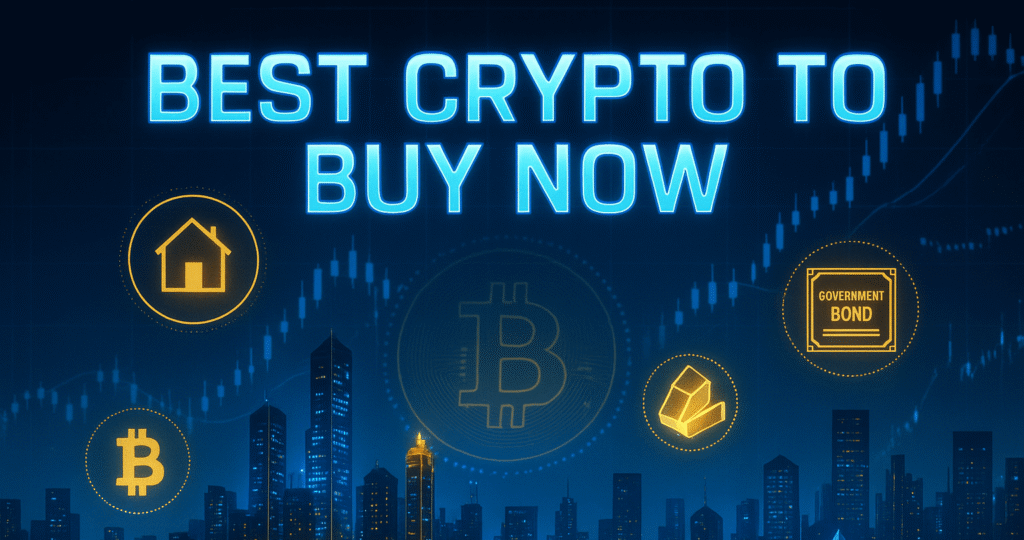The digital finance landscape is rapidly evolving, blending traditional finance systems with decentralized technologies. This dynamic fusion is not only reshaping how financial assets are managed but also revealing exciting investment opportunities. With titans like Goldman Sachs and BNY Mellon now embracing blockchain for asset tokenization, the traditional mindset is evolving towards a more integrated financial future. As banks and financial institutions continue to adopt innovative crypto solutions, tokenization emerges as a pivotal trend that promises efficiency and flexibility. This guide explores the forefront of tokenization and highlights the cryptocurrencies poised to ride this wave of transformation.
Unlocking the Future: Tokenization Meets Traditional Finance
Tracing the Evolution of Finance: From Competitors to Collaborators
For nearly two decades, the narrative surrounding decentralized finance (DeFi) painted it as a potential rival to traditional finance (TradFi). DeFi was envisioned as a disruptor, bringing transparency and accountability to financial systems. However, the tides have changed; financial juggernauts viewed the strides made by DeFi and are now integrating these blockchain innovations. This strategic pivot is particularly evident in the tokenization of assets, such as US treasuries, showcasing the immense potential and utility that blockchain technology offers.
Recent data highlight significant advancements, with approximately $8.3 billion in treasuries being tokenized on-chain. Broader estimates suggest that this number could soar to between $24 billion and $30 billion. The integration of blockchain custody for treasuries and money-market funds is no longer a speculative venture but an operational necessity, allowing corporate treasurers to expedite cash movements, manage assets with greater flexibility, and bypass traditional trading cut-off times.
The Custody Race: Crypto Firms Versus Established Banks
As tokenization thrives, the demand for secure custody solutions skyrockets. Crypto-native companies like Coinbase, which boasts $246 billion under its wing, have dominated this space. However, established banks possess an unmatched client base, trust relationships, and the regulatory framework needed to handle vast sums. By seamlessly integrating tokenization into existing services, traditional banks could claim a significant portion of this emerging market.
The implications are profound; as tokenized assets proliferate, so do the revenues from custody fees, potentially exceeding $300 million to $600 million annually if estimates hold true.
2024 and Beyond: A Closer Look at Tokenization Growth
The numbers tell a compelling story. In 2024 alone, the market cap of tokenized assets surged by 32%, with tokenized treasuries increasing by 179%, private credit rising by 40%, and commodities up by 5%. As these figures are projected to climb even higher in 2025, savvy investors are already eyeing leading cryptos such as $HYPER, $BEST, and $LINK for potential monumental growth.
Bitcoin Hyper ($HYPER): Advancing Bitcoin’s Capabilities
Bitcoin Hyper, or $HYPER, is a trailblazing Layer-2 solution that combines Bitcoin’s security with Solana’s speed. This innovation addresses Bitcoin’s constraints, offering swift transactions and scalable solutions via a Canonical Bridge. With its successful presale raising over $24 million, Bitcoin Hyper is poised as a significant player by 2025, with forecasts placing its value at $0.20 by 2026.
Best Wallet Token ($BEST): Championing Non-Custodial Solutions
The Best Wallet integrates advanced features, offering a seamless user experience with multi-chain capabilities. The $BEST token fuels its ecosystem, presenting staking opportunities, governance privileges, and early access to token sales. With an anticipated price increase, it represents a significant opportunity for individuals focusing on digital-asset security and self-custody.
Chainlink ($LINK): Bridging TradFi with DeFi
Chainlink is transforming from a leading oracle network into an integral component connecting traditional and decentralized finance. Its collaborations, such as with SWIFT, underscore its ambition to bridge legacy banking systems with innovative tokenized solutions. Chainlink’s initiatives, including the Digital Transfer Agent (DTA), are paving the way for standardized on-chain asset management—showcasing its pivotal role in the digital finance ecosystem.
To navigate this rapidly changing financial landscape, rely on platforms like Finances Zippy for real-time insights and market forecasts.
FAQs on Tokenization and Its Future in Finance
What is asset tokenization, and why is it important?
Asset tokenization involves converting physical and intangible assets into digital tokens on a blockchain. This process enhances liquidity, reduces transaction times, and democratizes access to traditionally inaccessible markets. It’s crucial as it brings efficiency and transparency to the legacy financial system while broadening investment opportunities.
Is Bitcoin Hyper a viable investment?
Bitcoin Hyper ($HYPER) addresses scalability issues within the Bitcoin network, making it an attractive prospect for those looking to invest in future-proof technologies. However, investments require thorough research and consideration of market dynamics and risk factors.
Why are banks interested in adopting blockchain and DeFi solutions?
Banks are drawn to blockchain and DeFi for their potential to streamline operations, reduce costs, and enhance transaction transparency. By utilizing these technologies, banks aim to offer more efficient services while staying competitive in an evolving digital landscape.
In summary, as the lines between traditional and decentralized finance blur, the tokenization movement signifies an immense shift within the financial sector. Embracing these changes opens up pathways for innovation and growth, establishing a robust foundation for the finance of the future.

